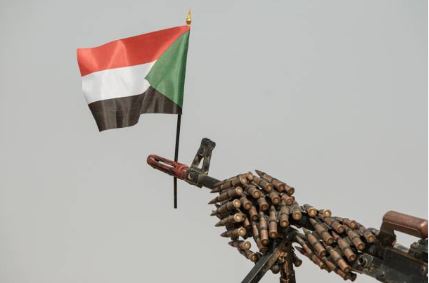The United Nations on Monday said nearly two years of conflict have fueled a catastrophic protection crisis and displaced a staggering 12 million people in Sudan and across borders.
According to the UN, fighting continues to kill and injure civilians and destroy hospitals, markets, and other essential infrastructure. Nearly two-thirds of the population need emergency aid, and the country is facing famine conditions. Refugees in dire need arrive in neighboring countries where local resources are already stretched thin.
In response, the United Nations and partners today (Monday) launch the 2025 humanitarian and refugee response plans for Sudan, appealing for a combined US$6 billion to assist nearly 26 million people inside the country and in the region.
“Sudan is a humanitarian emergency of shocking proportions,” said Under-Secretary-General for Humanitarian Affairs and Emergency Relief Coordinator Tom Fletcher. “Famine is taking hold. An epidemic of sexual violence rages. Children are being killed and injured. The suffering is appalling. But our plan is a lifeline to millions. We need to stop the fighting, the funding to deliver for the Sudanese people, and better access by land, sea, and air to those who need help.”
For his part, Filippo Grandi, UN High Commissioner for Refugees, said one-third of Sudan’s entire population is displaced.
“The consequences of this horrific and senseless conflict spread far beyond Sudan’s borders. Neighboring countries have shown great solidarity by welcoming refugees, even when more are arriving every day. But their resources are stretched – essentials such as water, shelter, and health services are scarce – and Sudan needs urgent support,” Grandi said. “The international community must step up and help, not just to ensure that emergency aid and life-saving protection can continue without disruption, but also to end the violence and restore peace to Sudan.”
Response in Sudan
The UN says famine conditions have been reported in at least five locations in Sudan, including displacement camps in Darfur and the western Nuba Mountains. Catastrophic hunger is expected to worsen by May when the lean season begins. With continued fighting and basic services having collapsed across most of the country, the crisis is set to get worse.
The Humanitarian Needs and Response Plan for Sudan aims to reach nearly 21 million vulnerable people with life-saving aid and protection. This is the highest number of people in any UN-coordinated plan this year and requires $4.2 billion in support.
Response in the region
According to the UN, as the conflict rages on, thousands continue to flee every day. The majority arrive in an extremely vulnerable state, with high levels of malnutrition and requiring emergency assistance. To date, nearly 3.5 million people have sought safety in neighboring countries, further stretching already scarce services and resources.
The Regional Refugee Response Plan will prioritize the delivery of life-saving assistance and protection, including emergency shelters, relocation from border areas to safer locations, psychosocial support, clean water, healthcare, and education. Humanitarian partners will need $1.8 billion to support 4.8 million people in the Central African Republic, Chad, Egypt, Ethiopia, Libya, South Sudan and Uganda. The plan also aims to help host countries strengthen national services and implement programs that will help bring stability.
Without immediate funding, two-thirds of refugee children will be denied access to primary education, threatening an entire generation. Up to 4.8 million refugees and host community members will continue to face severe food insecurity, with at least 1.8 million going without food assistance. Already strained health systems may collapse.
Achievements in 2024
The UN revealed that with US$1.8 billion in support last year, humanitarian organizations reached more than 15.6 million people across Sudan. Assistance included food and livelihoods support for more than 13 million people as well as water, sanitation and hygiene support, health and nutrition, and shelter assistance.
Humanitarian organizations working in neighboring countries provided lifesaving assistance, delivering food to over a million people, medical support to half a million, and protection services to over 800,000.




